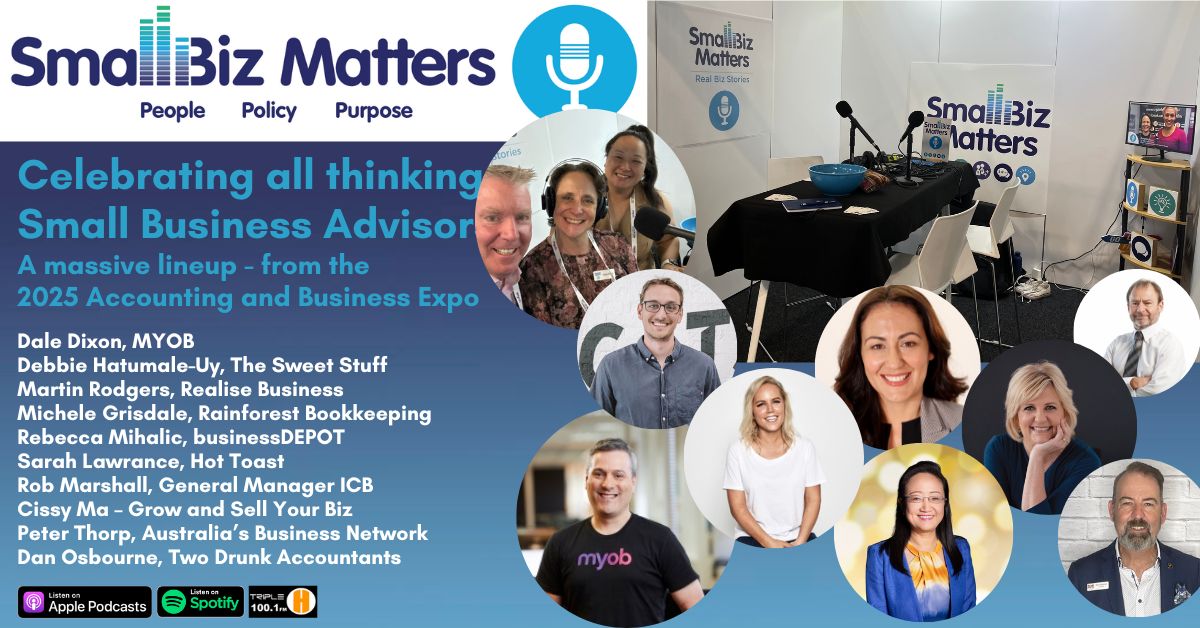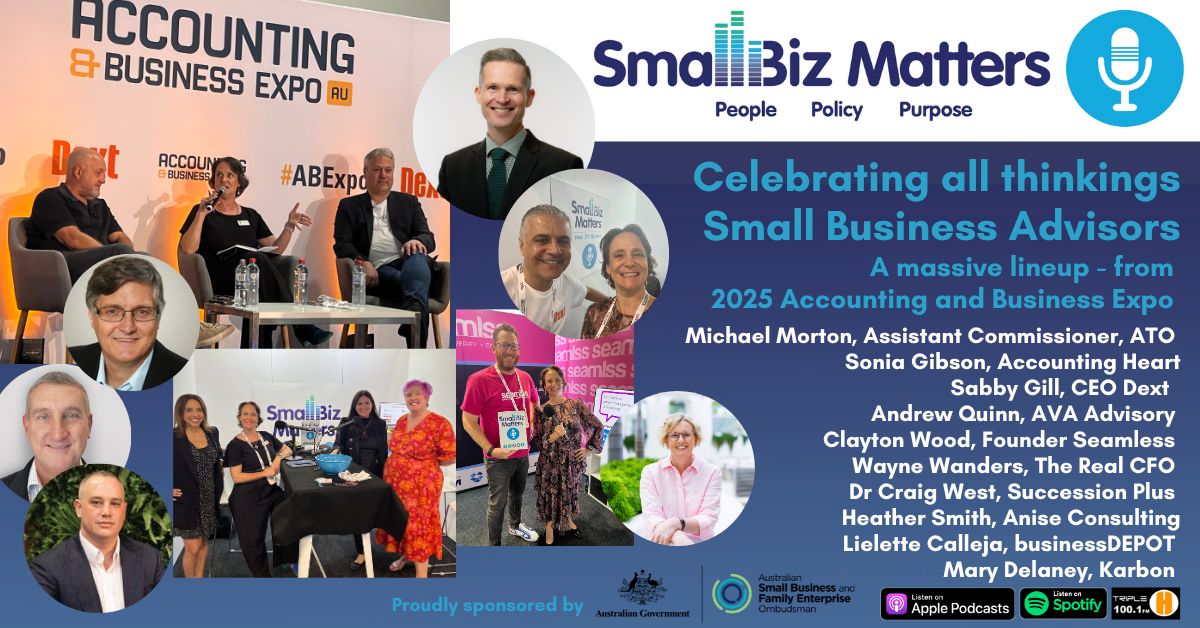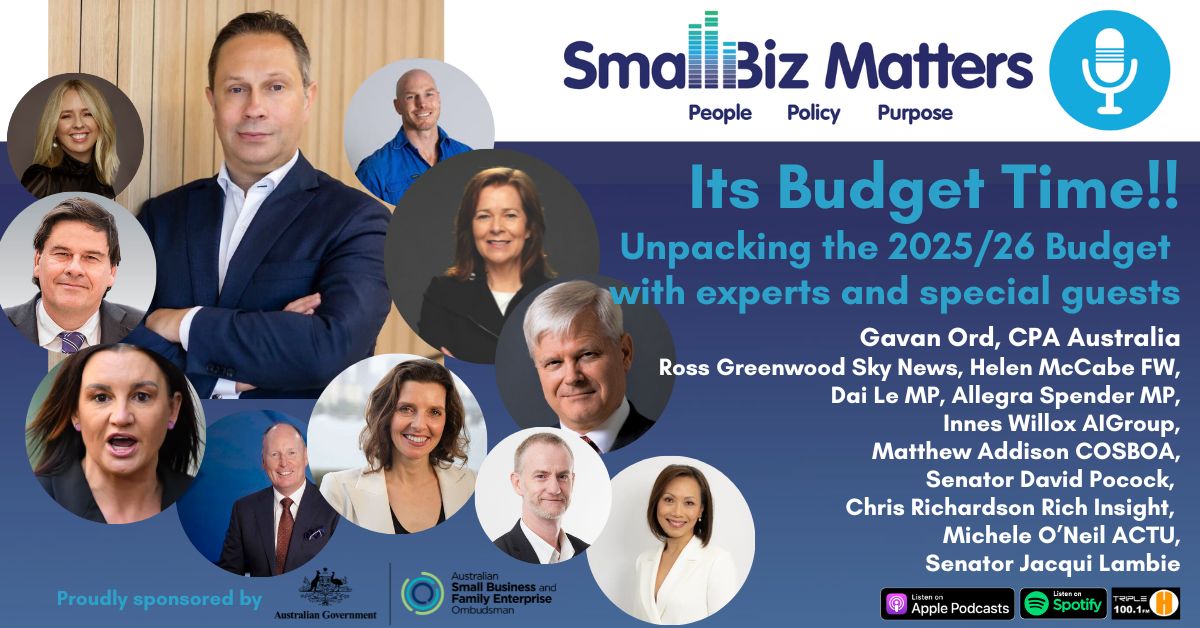What can we learn moving forward from looking back - Part 1
|Small Biz Matters – a half hour program each week where you can work ON your business rather than IN it.
Small Business Bookkeeping Tips
with Alexi Boyd from Boyd Office Management Services
Date: 19 April 2016
ALEXI
Andy Farrell has more than 20 years experience in digital, working with some of Australia's largest corporations across 8 different industries. He has also founded technology startups, raised venture capital, sold companies he built from scratch and employed hundreds of people since his first business started at the age of just 17.
Today, we're talking about how to grow your business by making digital part of your businesses DNA.
ANDY
To answer that question, I think it's helpful to wind the clock back for a moment and remind ourselves where we've come from.
Back in 1999 an almost apocalyptic book was published call The Cluetrain Manifesto. It was subtitled "The End of Business As Usual".
At that time, not everyone was a believer that the Internet was going to change everything. The interesting thing is the change was not all about technology. The book delved into the human psyche to uncover how the digital revolution would change the world in human terms.
ALEXI
And change it did. If you think back over the past decade, there's a lot of things we've said goodbye to and a few that are almost gone.
For example with the very odd exception, music stores, video hire shops and cheque books are are pretty much completely gone.
ANDY
Right - we saw the collapse of huge chains like Tower Records in the USA and Blockbuster Video -9,000 stores in 2004 and now after filing for bankruptcy and being acquired they're down to 51 stores.
I think broadcast television, Cable TV and DVDs are at various stages of the almost gone list. Commercial TV is in all kinds of trouble, Cable TV can't compete with the likes of Netflix or Stan which in turn are also spelling the end for video ownership, in much the same way music services like Spotify and iTunes ended the era of the CD ownership.
ALEXI
What about all the amazing new things that have come into existence in the past decade that have reshaped business?
ANDY
There's so many to choose from - but it's true, a few have seriously changed how we grow business and are a reflection of that very human part of the digital transformation.
I'm thinking about the arrival of the first massive digital social networks MySpace and Friendster - incredibly only to watch them both collapse and be replaced by Facebook, Twitter and now a plethora of others - Instagram, Tumblr and Snapchat. And some you may not have heard of which are a phenomenon all of their own - For example in China messaging app and social network WeChat has over 600 million active users.
ALEXI
Interestingly, in our local community, WeChat also has a lot of users. It's a great app to chat with friends or meet new people.
ANDY
In China you can also do person-to-person payments, book your dentist, pay your utility bills and use thousands of other applications. WeChat may just be a preview of where Social apps are going.
But what's much more interesting is how the behaviour of people has changed as a result of all this and then figuring out what does that mean for how we get the message out about the products and services we're trying to sell.
ALEXI
I think the hard thing is this is a transformation we've all been a part of and all have access too - so now there's a new problem: How to cut through the clutter, how to rise above the noise and actually be heard. Everyone has something to say.
ANDY
So true. It's easy to waste a lot of time and money rushing down one path trying to make digital work for your business without the right planning or processes - which is why some businesses say they've tried and given up, or they've tried and they're struggling with making it work.
ALEXI
So, if that's you - don't be despondent, you're not alone!
Are there specific things you can do to give yourself an advantage? I mean, are there processes you can follow to work out the right mix for your business?
ANDY
This is where we get back to Cluetrain Manifesto. In it the author writes about the very human longing "for more connection between what we do for a living and what we genuinely care about" and how people want a "release from anonymity, to be seen as who we feel ourselves to be rather than as the sum of abstract metrics and parameters."
Now most large companies 15 years after those words were written are still struggling to come to terms with these driving needs people have. They struggle to treat people as individuals, to make an authentic connection with their customers, to engage in a meaningful dialogue with them. And these are things small businesses can be great at - being close to customers, being smaller and more agile, they're actually sitting on a lot of potential to succeed in this area as a way of gaining the trust of customers and earning credibility.
ALEXI
There was a time when the only way to do any of this was with a full page ad in a magazine and the magic of finding that connection was in the secret sauce that ad men concocted.
ANDY
Yes and with television we entered the era of wholesale interruption, where attention was stolen instead of being given. So all that's changed - and knowing that we can nail down the core ideas around our digital strategy.
So, the very first thing is we need to understand is that the old model has flipped, everything has indeed changed. So, that's my point #1 for incorporating digital into your business -
#1 You need to commit to embrace digital and build an understanding of the way it works.
This is not something you can skate around the edge of, or dabble in a little bit to kind of, sort of, see if maybe... no, forget that. Success depends on figuring out how to get into the digital space and make it an integral part of your business.
It needs to be in your business culture - not a bolt on or an after thought.
ALEXI
That sounds very fluffy. What do you mean exactly?
ANDY
Let's take a real example - let's say you're a small business launching something new - a new shop, a new product range, a new service, a better deal. In a business that doesn't think digital here's what going to happen. Let's be even more specific, let's say it's a new cooking appliance.
So - in this case they might run some print ads, send out some flyers...
ALEXI
...and do some radio ads on HHH of course.
ANDY
But of course! So, at the last minute they think to put their website address on everything and mention it in their radio ad!
In come the enquiries - some are from their website contact form - great, some are by phone, some walk in to their shop and at the end of week one, one of the owners will sit down and say to one of the other owners, "well, the campaign seems to be working!" and they will both breath a sigh of relief. Then the other will say "yes, only we don't know what worked and we can't afford to spend the same again next week because our cost of advertising like this every week is too high compared to the business we just generated."
ALEXI
So, what should they have done?
ANDY
Well, there's a whole lot of options. Let's just pick a few easy ones.
They could have used a slightly different web address for the full page ad they ran in the local newspaper so when people went to that address they would know exactly how many leads online the newspaper ad generated
And they could have used another slight different address for the printed flyers. Now they can see from their website visitor referring report which worked better.
When people called up they could have asked how they found out about the new product and then entered that information in a customer database
These are all simple mechanical steps --- so you can measure what's working
But, if digital was truly in the business DNA you could have done so much better and really changed how the entire market saw your business.
ALEXI
Okay, now you're talking. How can a business totally change how they're perceived?
ANDY
Stop selling. By that I don't mean stop selling whatever you sell, but I do mean stop leading your messaging with a sales pitch. A lot of the time, it just no longer works.
ALEXI
Okay, this is sounding scary! What do you do instead?
ANDY
Help. You start figuring out how your business can help people. What's your expertise? What do you want to be known for? How can you build authentic trust and credibility?
What you're doing now is making the shift to engaging people around what they care about, by opening up a channel to create a dialogue with your customers and potential customers.
So, going back to our example - the campaign could have been inviting people to visit the businesses website to receive a months worth of step-by-step healthy meal plans and recipes with how to videos demonstrating time saving ideas. One of those ideas would be the new product.
ALEXI
Right - so now, you have people coming from flyers, ads, radio and because digital is your DNA, you've also used Facebook ads and Google PPC ads and now they're hitting the website - they provide their email and how they found out the offer. You can measure everything.
ANDY
Yes, you've just achieved a whole bunch of things but most importantly you've positioned yourself as an expert in cooking, meal planning and time saving instead of a seller of widgets - so your trust rating just jumped through the roof. You've built a genuine relationship with people who have engaged with your content because you provided something of value - you helped people - and in so doing, earned the right to nudge them closer to what you also need to do -- talk about your product. Notice I didn't say sell.
ALEXI
How does that help with your marketing budget?
ANDY
When you know exactly which of the ad $ you spent worked - you tracked everything - it's not hard to implement, you can optimise your next campaign to those channels that worked best. If you're really smart, you could also run different versions of your ads with different headlines and images and optimise ever more to the ad that converts the best. You would also know the exact cost to get a customer.
So - to recap, the #2 step for putting digital in your DNA is to Understand that it's no longer about selling, it's about helping
ALEXI
Right, so that would change the focus of your entire marketing effort. So, let's say I do all that - I post great content, I'm getting lots of Likes on Facebook or Instagram, building up my followers. But I've noticed over time, I may have a lot of followers, but only a few people respond to each post I make.
ANDY
Yes, that's a problem. And it's the third digital DNA point - a bit of a reality check. As you build your digital business channels, some are going to work better than others. Not every social network is right for every business. I see that a lot - seminars on why you *must* be on Twitter or why you've got to do a Facebook page - there's no one formula. You have to investigate the landscape and see where are your customers hanging out.
It's worth checking out Google Insights - go to www.google.com/insights and check out Correlate and Trends. Here's you can find totally free data on what people are searching for and correlate it with locations, times and even news. Tools like that can be fascinating for understanding your customers. When you work out the words people use to search for your product or service, you can start to find Social Network Pages, Blogs, Videos, Forums and so on that have the people you need to reach using them.
ALEXI
There's all this amazing data out there about what people do.
ANDY
Absolutely! On Facebook, you can even run ads that target people who are similar in a number of ways to people who have visited your website before. It's incredible what's possible. And that's very cool for business people.
But it cuts through to the flip side of your Facebook problem. Facebook is free. And when something is free, a lot of the time, it's you who is the product. And with Facebook, that is the case. It's the users who are being sold to the advertisers.
It's Facebooks playground, they set the rules and for businesses building pages with followers in the hope that will be a reliable and strong channel for their business - well, that's a very risky approach. Ultimately Facebook is most interested in selling you the right to talk to those customers you worked so hard to get to Like your page and Like your content.
ALEXI
So, Facebook can change the algorithm any time that controls who sees what you post. So, you need to be smarter than just posting content and hoping people see it.
ANDY
Yes, what you're really doing is build acquisition channels - you use your social messaging, your guest blog posts, forum comments and so on to drive people to the high value content on your own website, where you control the rules. There, you have the opportunity to invite visitors to get more involved for example by subscribing to a newsletter, downloading bonus content in return for giving their email address, or registering to comment on a post, or gain access to an online calculator - whatever makes sense for your business.
ALEXI
So it's all about driving traffic to your own website?
ANDY
Yes, this is critical. You don't want to get into a situation where you rely heavily on a communication channel you don't control and you can't predict.
So that shifts your objectives in social - it means most of the content you post there should be your content, linking through to your website.
You're not shooting for vanity metrics like total followers or likes on your posts. Sure, they matter and they tell you what you're posting is getting somewhere, but ultimately the number you care about is how big is the number of people who see somethng you said or something you posted and then clicked through to your website.
ALEXI
So, how do I measure that?
ANDY
There's two ways to measure the clicks on your content posts. One is to looking at your website visitor report on which websites are referring traffic.
But you probably want to know how many clicks you get for each post - that way you know what content is working. The exciting thing is, you'll probably see way more clicks on your content than you will likes or shares.
So, to do that, you need to use a URL shortner. My favourite is Google URL Shortener - you can search for that or just go to goo.gl.
ALEXI
Okay, I'm writing this down!
ANDY
A URL shortener services does a few things. The first is take your long link or URL and make it really super short so it will take the least number of characters - which is really important if you're using Twitter - but it also just looks neat.
The second is to track how many times each link is clicked on. So, be sure to set up your Google URL Shortener account with a login so you can come back and check the numbers.
ALEXI
That's great to know. I'll definitely start using that on Small Biz Matters.
ANDY
If your website has a good social sharing widget plugged in, it will already be generating shareable short URLs with reporting on clicks. And your website actually has that already - so when you're sharing your own content on social, start by publishing to your website, then use the share button for the social network you want to share to located on the content page.
ALEXI
It seems like you can measure just about everything!
(Photo courtesy of https://www.flickr.com/photos/matt_d/)





